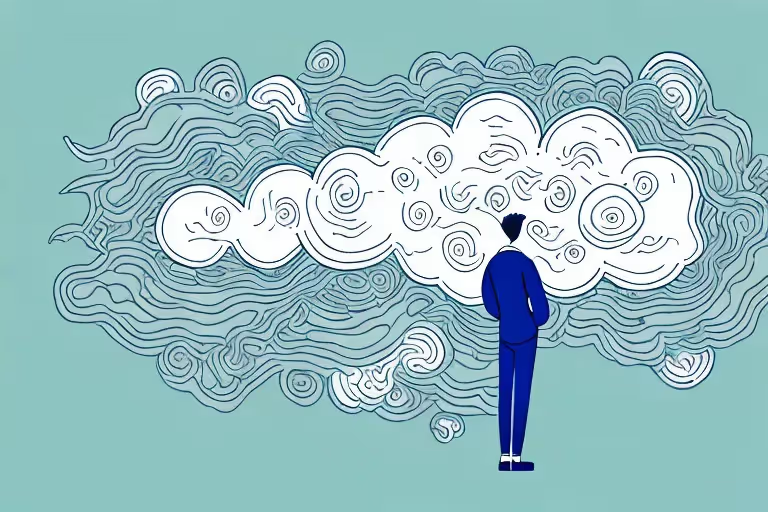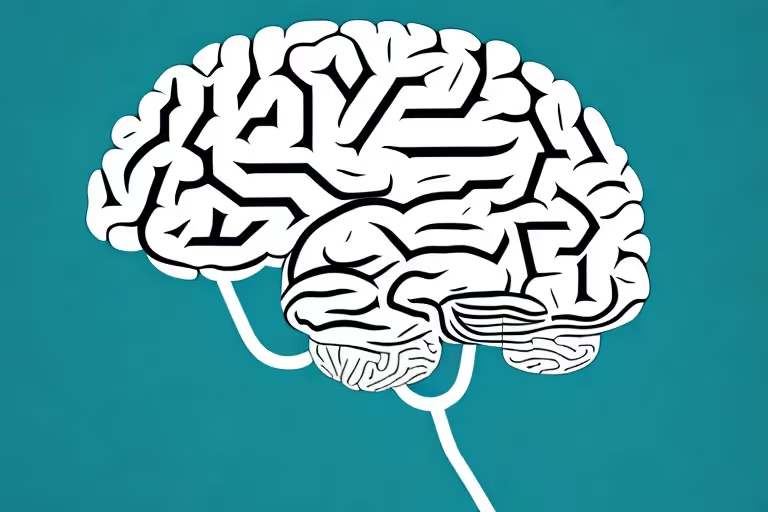Anxiety tics can be confusing and sometimes distressing for those who experience them. In this article, we will explore what anxiety tics are, the connection between anxiety and tics, how to recognize them, and the impact they can have on daily life. We will also discuss various management and treatment options for anxiety tics to help individuals find relief and improve their quality of life.
What are Anxiety Tics?
Anxiety tics are sudden, repetitive, and involuntary movements or sounds that are often related to feelings of anxiety or stress. These tics can range from simple motor tics, such as eye blinking or shoulder shrugging, to more complex vocal tics, such as throat clearing or sniffling. While tics can be common in childhood, anxiety tics can affect individuals of any age.
Defining Anxiety Tics
Anxiety tics are a subset of tics that are specifically triggered or influenced by anxiety or heightened stress levels. They are distinct from other types of tics, such as those associated with Tourette syndrome, where the cause is primarily neurobiological.
When it comes to anxiety tics, it is important to understand that they are not intentional or voluntary. People experiencing anxiety tics often feel a sense of powerlessness and frustration as these tics can occur at any time, without warning. The severity and frequency of anxiety tics can vary from person to person, with some individuals experiencing occasional mild tics, while others may have more frequent and pronounced tics.
It is worth noting that anxiety tics can be disruptive and interfere with daily activities, social interactions, and overall quality of life. They can draw unwanted attention and lead to feelings of embarrassment or self-consciousness. However, with understanding, support, and appropriate management strategies, individuals with anxiety tics can learn to cope and minimize the impact of these tics on their daily lives.
Common Types of Anxiety Tics
Anxiety tics can manifest in various ways, with commonly reported tics including eye blinking, facial grimacing, throat clearing, sniffing, and repetitive body movements, such as hand shaking or foot tapping.
Eye blinking is one of the most prevalent anxiety tics. It can range from a subtle fluttering of the eyelids to more pronounced and rapid blinking. This tic can be particularly noticeable and may cause discomfort or irritation in the eyes.
Facial grimacing is another common anxiety tic, where individuals may involuntarily contort their facial muscles, resulting in grimaces or exaggerated expressions. This tic can be distressing for the person experiencing it, as it may be misinterpreted as a negative reaction or mood.
Throat clearing and sniffing tics can be both physically and socially challenging. Individuals with these tics may feel the need to clear their throat or sniff repeatedly, even when there is no actual irritation or congestion. These tics can draw unwanted attention and may be mistaken for signs of illness or allergy.
In addition to facial and vocal tics, anxiety can also manifest in repetitive body movements. Hand shaking is a common motor tic associated with anxiety, where individuals may experience involuntary trembling or shaking of their hands. This can make tasks requiring fine motor skills, such as writing or using utensils, difficult and frustrating.
Foot tapping is another example of a repetitive body movement tic. Individuals with this tic may find themselves tapping their feet rhythmically or continuously, often without even realizing it. This tic can be disruptive in quiet or formal settings, as it can create noise and distract those around them.
It is important to remember that anxiety tics can vary greatly from person to person. Some individuals may experience a combination of these common tics, while others may have less typical tics that are unique to them. The key is to approach anxiety tics with empathy and understanding, recognizing that they are involuntary reactions to anxiety and stress.
The Connection Between Anxiety and Tics
The link between anxiety and tics is complex and multifaceted. While anxiety can trigger or exacerbate tics, tics can also cause anxiety and stress due to their involuntary nature. Understanding this relationship is crucial in effectively managing anxiety tics.
Anxiety tics, also known as tic disorders, are characterized by sudden, repetitive, and involuntary movements or vocalizations. These tics can range from mild to severe and can significantly impact an individual's daily life. The connection between anxiety and tics is not fully understood, but research has shed light on some key factors.
The Role of Stress and Anxiety in Triggering Tics
Stress and anxiety are known to be significant triggers for anxiety tics. When individuals experience increased stress levels, they may be more prone to tic episodes. This can create a vicious cycle, as the presence of tics can further elevate anxiety levels, leading to more tics. It is essential to recognize and address stressors and anxiety in order to effectively manage anxiety tics.
There are various stress reduction techniques that can be helpful in managing anxiety tics. These may include relaxation exercises, such as deep breathing or progressive muscle relaxation, as well as engaging in activities that promote relaxation and self-care, such as yoga or meditation. Additionally, seeking support from mental health professionals, such as therapists or counselors, can provide individuals with valuable coping mechanisms to better manage stress and anxiety.
The Biological Mechanism Behind Anxiety Tics
Research suggests that anxiety tics involve dysfunctions in certain brain regions, such as the basal ganglia and prefrontal cortex. These brain areas play a crucial role in regulating movements and emotions, and abnormalities can contribute to the development and persistence of anxiety tics.
Moreover, neurotransmitters, such as dopamine and serotonin, are believed to play a role in anxiety tics. Imbalances in these neurotransmitters may contribute to the development and severity of tics. Understanding the underlying biological mechanisms can guide the development of targeted treatments for anxiety tics.
It is important to note that anxiety tics can vary greatly from person to person. Some individuals may experience motor tics, such as eye blinking or shoulder shrugging, while others may have vocal tics, such as throat clearing or repetitive speech patterns. The severity and frequency of tics can also differ, with some individuals experiencing occasional tics and others having chronic and persistent tics.
Overall, the connection between anxiety and tics is a complex interplay of psychological and biological factors. By addressing stress and anxiety levels, implementing coping mechanisms, and understanding the underlying mechanisms, individuals can better manage their anxiety tics and improve their overall quality of life.
Recognizing Anxiety Tics
Recognizing anxiety tics is crucial for understanding and addressing them effectively. By being aware of the symptoms and signs, individuals can seek appropriate support and treatment.
Symptoms and Signs of Anxiety Tics
Anxiety tics can manifest differently in each individual. Symptoms may include sudden, rapid movements or sounds that occur repeatedly, an urge or tension preceding the tic, and a temporary relief or decrease in tic severity after completing the tic.
How Anxiety Tics Differ from Other Tics
While anxiety tics share some similarities with other types of tics, such as those associated with Tourette syndrome, they can be differentiated based on triggers. Anxiety tics are specifically triggered by anxiety or heightened stress, whereas other tics may not depend on emotional factors.
The Impact of Anxiety Tics on Daily Life
Anxiety tics can significantly affect various aspects of daily life, including social interactions and self-esteem. Understanding and addressing these impacts are vital for individuals with anxiety tics to lead fulfilling lives.
Social Implications of Anxiety Tics
Anxiety tics can sometimes lead to social difficulties, as they can be misunderstood by others who are unaware of the underlying anxiety component. Individuals may feel self-conscious or embarrassed, leading to isolation or avoidance of certain social situations.
Anxiety Tics and Self-Esteem
Chronic anxiety tics can take a toll on an individual's self-esteem and confidence. Feeling self-conscious about tics can make it challenging to engage in activities or pursue personal goals. Building self-acceptance and resilience can be beneficial for managing anxiety tics and improving self-esteem.
Managing and Treating Anxiety Tics
While anxiety tics can be challenging, various management and treatment strategies can help individuals find relief and regain control over their tics and anxiety.
Therapeutic Approaches for Anxiety Tics
Cognitive-behavioral therapy (CBT) is an effective therapeutic approach for anxiety tics. CBT can help individuals identify and challenge anxiety-related thoughts and develop coping strategies to reduce tic severity and improve overall well-being.
Medications and Natural Remedies
In some cases, medication may be prescribed to manage anxiety and reduce tic frequency or severity. Additionally, natural remedies, such as relaxation techniques, mindfulness practices, and physical exercise, can complement treatment and promote overall mental health.
Lifestyle Changes to Help Manage Anxiety Tics
Making certain lifestyle changes can contribute to better management of anxiety tics. Prioritizing stress management, practicing relaxation techniques, maintaining a balanced diet, and getting regular exercise have been reported to have positive effects on tic severity and overall well-being.
In conclusion, understanding anxiety tics and how to manage them is crucial in improving the quality of life for individuals experiencing them. By recognizing symptoms, understanding triggers, and implementing appropriate management strategies, individuals can gain control over their anxiety tics and lead more fulfilling lives.
As you embark on your journey towards managing anxiety tics, consider using the Aura Health app. This app offers a range of guided meditations, relaxation exercises, and mindfulness practices specifically designed to help individuals combat anxiety and reduce tic severity. With its user-friendly interface and evidence-based techniques, Aura Health is a valuable resource in your quest for relief and well-being.
Aura is Your All In One App for Meditation, Mindfulness Wellbeing
Find peace every day with one app for your whole well-being. There is no one-size-fits-all solution to mental well-being. Aura is the first all-in-one wellness app that learns how to best help you. Discover an endless library of expert-created tracks for your well-being, all taught by the world’s best coaches, therapists, and storytellers. With Aura's personalized recommendations, you can find peace every morning, day and night.



.webp)






.avif)

%20(1).avif)


.avif)
.avif)
.webp)


.avif)


















































































































.avif)

















.svg)





.avif)



